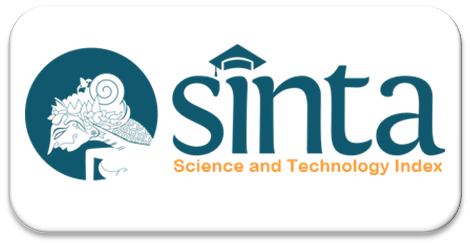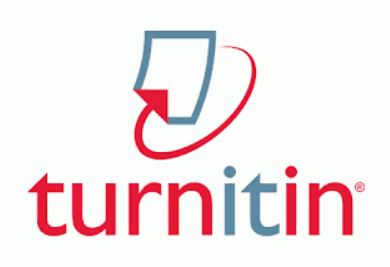Pengaruh Terapi Musik Terhadap Penurunan Tekanan Darah Pada Pasien Post Hemodialisa Di Rsud Prof. Dr. Margono Soekarjo Purwokerto
Abstract
One of hemodialisa complication is the increase of blood pressure. Some of research show that music therapy can decrease blood pressure. The purpose is to know the influence of music therapy to the decrease of blood pressure in post hemodialisa patients. Research design is quasy eksperiment design non equivalent control group. Sampling technique is purposive sampling. The sample of the research were 20 respondents (as control group, and experiment group). The data taken measurement of blood pressure before and after music therapy. The analysis used are difference test and logistic regression. The results show that there is difference sistolik of blood pressure on the experiment group and there isn’t difference on the control group ((p = 0,001 < 0,05), (p = 0,180 > 0,05)), there isn’t difference diastolik of blood pressure on the experiment group and there isn’t difference on the control group ((p =
0,343 > 0,05), (p = infinite)), there isn’t difference sistolik of blood pressure before and after between experiment group with control group (p = 0,175 > 0,05), (p = 0,055), there isn’t difference diastolik of blood pressure before and after between experiment group with control group ((p = 0,231 > 0,05), (p =
0,299 > 0,05)), there is relationship sistolik of blood pressure on hemodialisa patients, how many influence can’t presumably because OR can’t uncountable (p = 0,000, OR uncountable). The result of this research shows there is not the influence of music therapy to the decrease of blood pressure in post hemodialisa patients.
Keywords: Music therapy, blood pressure
References
Agarwal, R. et al., (2010). Intradialytic hypertension is a marker of volume excess. ,
: 3355–3361.
Anies. (2005). Seri Kesehatan Umum Pencegahan dini gangguan kesehatan berbagai penyakit dan gangguan kesehatan yang perlu diwaspadai dan dicegah secara dini. Jakarta: PT Elex Media Komputindo.
Chazot, C., and Jean, G. (2010). Intradialytic hypertension: It is time to act. Nephron Clin Pract, 115:c182-88.
Dalimartha, dkk., (2008). Care your self/hipertensi. Jakarta: Penebar Plus+
Ikrar, T. (2012). Nitric Oxide berperan dalam pencegahan dan penyembuhan penyakit jantung dan pembuluh darah. Tersedia dari: http://kabarinews.com/nitric-oxide- berperan-dalam-pencegahan-dan- penyembuhan-penyakit-jantung-
dan-pembuluh-darah/49513 (diakses 20/08/14).
Inrig, et al., (2009). Association of Blood Pressure Increases During Hemodialysis With 2-Year Mortality in Incident Hemodialysis Patients: A Secondary Analysis of the Dialysis Morbidity and Mortality Wave 2 Study. NIH Public Access, 54(5): 881–890.
dan hubungannya dengan
perubahan kadar: Endothelin-1, Asymmetric Dimethaylarginin dan Nitric Oxide” di RSUP Sanglah Denpasar. Disertasi dipublikasikan, Fakultas Unud.
Marliani, dkk. (2007). 100 Questions and Answers. Jakarta: PT Elex Media Komputindo.
Nursalam, dkk. (2011). Asuhan keperawatan pada pasien dengan gangguan sistem perkemihan. Jakarta: Salemba Medika.
Pusat Terapi Musik dan Gelombang Otak. (2011). Terapi musik untuk http://www.terapimusik.com/darah
_tinggi.htm (diakses 13/08/14).
Saing. (2007). Pengaruh musik klasik terhadap penurunan tekanan darah. Tesis dipublikasikan, Fakultas Kedokteran Universitas Sumatera Utara, Medan.
Wexler, et al. (2006). Nonpharmacologic Strategies for Managing Hypertension. Ohio State University College of Medicine, Columbus, Ohio. American Family Physician, 73 (11) pp. 1953-1956
Downloads
Published
How to Cite
Issue
Section
License
Submitted paper will be firstly reviewed by the editors to determine whether the paper meet the edition theme and submission guidelines. Papers which meet the theme and the guidelines will be assigned to selected reviewers for peer-reviews. Viva Medika: Jurnal Kesehatan, Kebidanan dan Keperawatan is a double blind peer-reviewed journal which involves reviewers based on their experties relevant to the topic of the paper. Final decision of paper acceptance is solely decided by the editors according to reviewers' comment.
Plagiarism and self-plagiarism are prohibited. Viva Medika: Jurnal Kesehatan, Kebidanan dan Keperawatan uses PlagiarismCheckerX and iThenticate to scan papers for detecting plagiarism. Thus, Appropriate citation and quotation should be used

.png)








